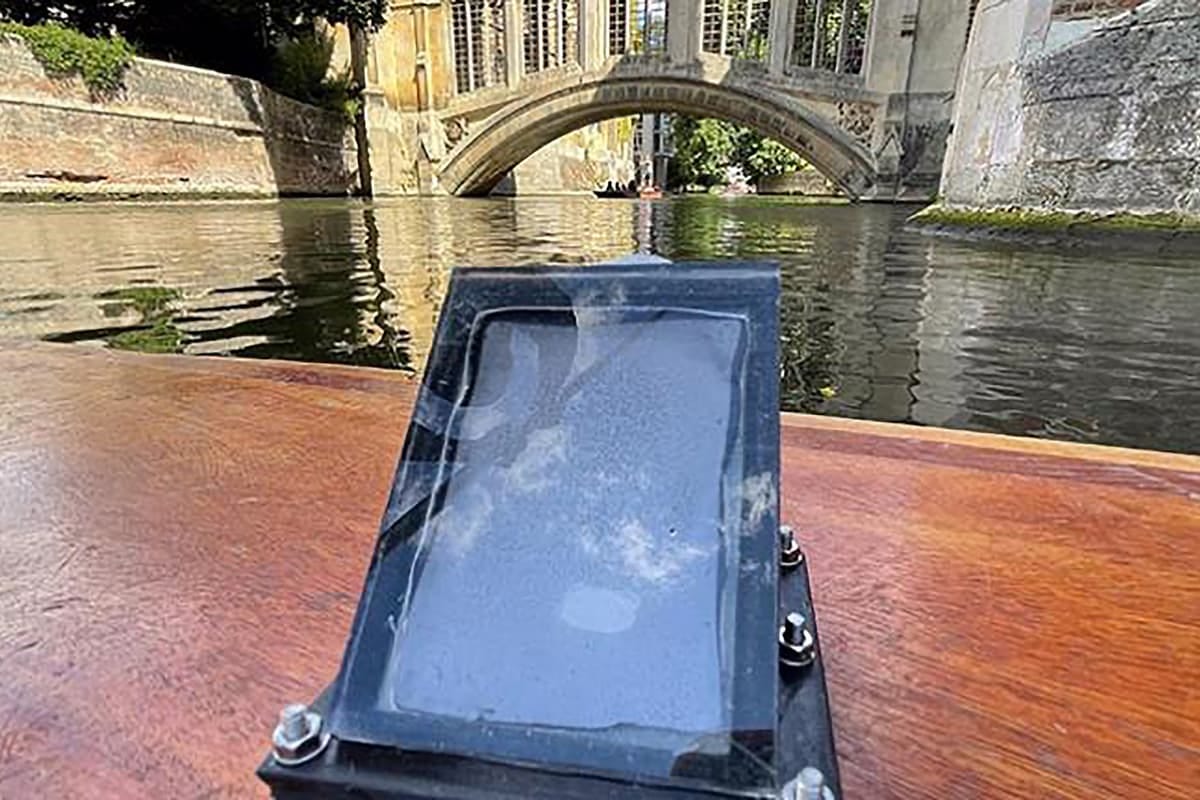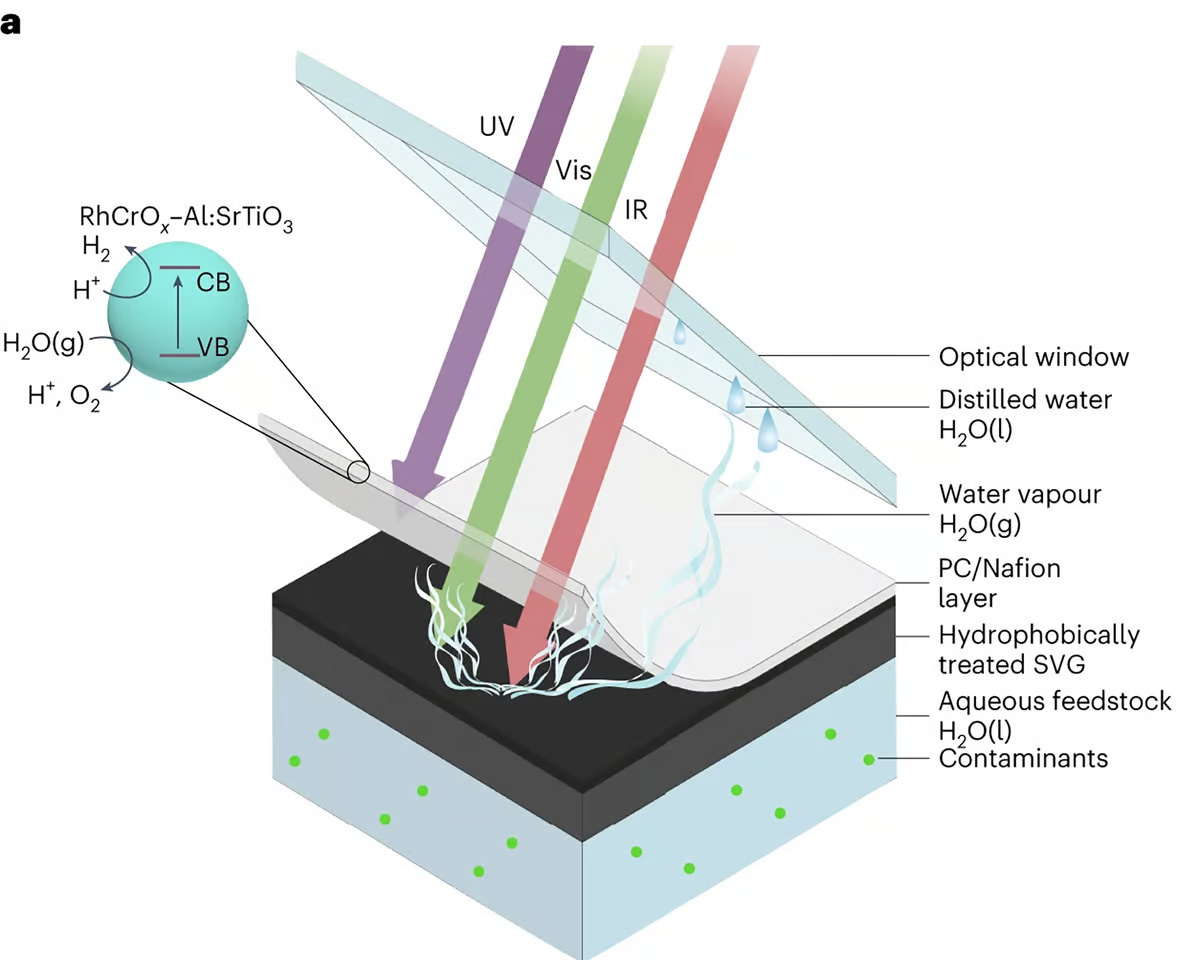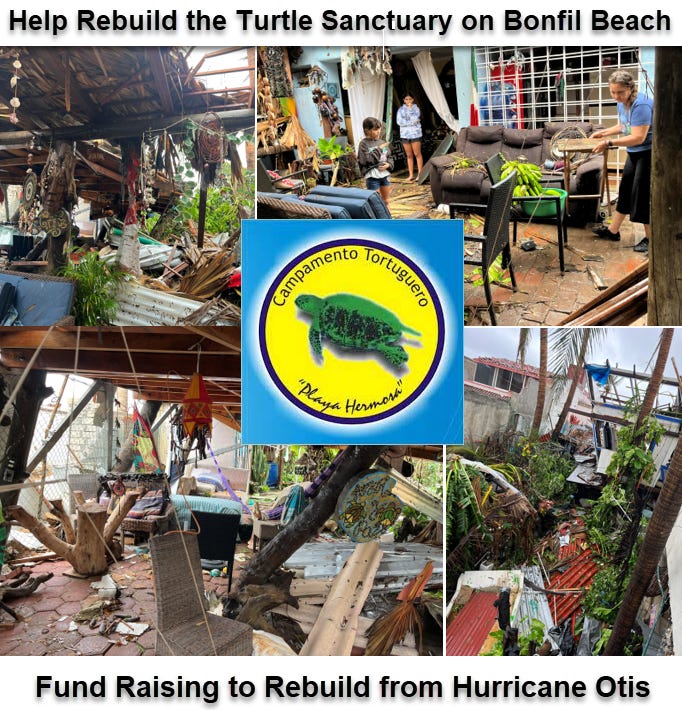Sun-run device turns dirty water into hydrogen fuel & drinking water
Researchers have created a floating, solar-powered device that converts contaminated water or seawater into clean hydrogen fuel and drinking water.

Because it works with any open water source and doesn’t require external power, the device could be used in resource-limited or remote places.
Photocatalytic water splitting converts sunlight directly into storable hydrogen but often requires pure water and land for plant installation, while generating unusable waste heat. With water being a precious resource, a photocatalytic device that uses any untreated water source, such as a river, sea, water reservoir or industrial waste water, would be a more sustainable option.
So researchers from the University of Cambridge, inspired by the process of photosynthesis, created a solar-powered device capable of producing clean hydrogen fuel and clean drinking water simultaneously from polluted water or seawater.
“Bringing together solar fuels production and water production in a single device is tricky,” said Chanon Pornrungroj, the study’s lead author. “Solar-driven water splitting, where water molecules are broken down into hydrogen and oxygen, need to start with totally pure water because any contaminants can poison the catalyst or cause unwanted chemical side-reactions.”
The researchers wanted to mimic a plant’s ability to photosynthesize, but unlike previous devices that produced green hydrogen fuel from clean water sources, they wanted their device to use contaminated water, making it usable in regions where clean water is hard to find.
“In remote or developing regions, where clean water is relatively scarce and the infrastructure necessary for water purification is not readily available, water splitting is extremely difficult,” said Ariffin Mohamad Annuar, a study co-author. “A device that could work using contaminated water could solve two problems at once: it could split water to make clean fuel, and it could make clean drinking water.”
They deposited a UV-light-absorbing photocatalyst on an infrared-light-absorbing nanostructured carbon mesh, a good absorber of both light and heat, to generate the water vapor used by the photocatalyst to create hydrogen. The porous carbon mesh, treated to repel water, helped the photocatalyst float and kept it away from the water below so contaminants didn’t interfere with its functionality. In addition, this configuration allows the device to use more of the Sun’s energy
“The light-driven process for making solar fuels only uses a small portion of the solar spectrum – there’s a whole lot of the spectrum that goes unused,” Annuar said.
So, the researchers used a white, UV-absorbing layer on top of the floating device for hydrogen production via water splitting. The rest of the light in the solar spectrum is transmitted to the bottom of the device, which vaporizes the water. This, say the researchers, more closely mimics transpiration, the process of water movement through a plant and its evaporation from aerial parts such as leaves, stems and flowers.
“This way, we’re making better use of the light – we get the vapor for hydrogen production, and the rest is water vapor,” said Pornrungroj. “This way, we’re truly mimicking a real leaf since we’ve now been able to incorporate the process of transpiration.”
The researchers tested their device using real-world open water sources, including water from the River Cam in central Cambridge and turbid industrial waste from the paper industry. In artificial seawater, the device retained 80% of its initial performance after 154 hours. The researchers say that because the photocatalyst is isolated from contaminants in the water source and remains relatively dry, the device can maintain its operational stability.
Campamento Tortuguero Playa Hermosa is a turtle sanctuary on Bonfil Beach outside of Acapulco that rescues sea turtle eggs that would be likely destroyed by vehicles on the beaches or pilfered by tourists. The sanctuary protects the eggs, hatches them and releases the babies into the ocean while protecting them from seagulls and other winged predators.
The 35-year-old sanctuary is run by the mother/daughter duo of Monica and Michel Vallarino, who have helped educate the community and the tourists on the ecology of the turtles while simultaneously providing a refuge for puppies, kittens, ducks, rabbits, and other wayward animals.
The Art of Liberty Foundation hosted an annual fundraiser from 2018-2020 called the Art of Liberty on the Beach (aKa The Turtle Party), where many of the leading artists in the liberty movement have rocked the sanctuary including Grant "Prezence" Ellman, Truniversal/Free Willow, Alais Clay, the Freenauts, DJ Koala, DJ Ramiro Romani and ELA-mental among others.
The sanctuary was devasted by Hurricane Otis, a category five hurricane that hit Acapulco and Bonfil Beach on November 2nd 2023.
25% of Funds Raised Will Benefit Other Residents of Bonfil Beach
The Art of Liberty Foundation is organizing a fundraiser where 100% of the proceeds will go to direct relief. The Vallarinos have agreed to share 25% of the proceeds with other Bonfil Beach residents in need to be distributed at their discretion.






